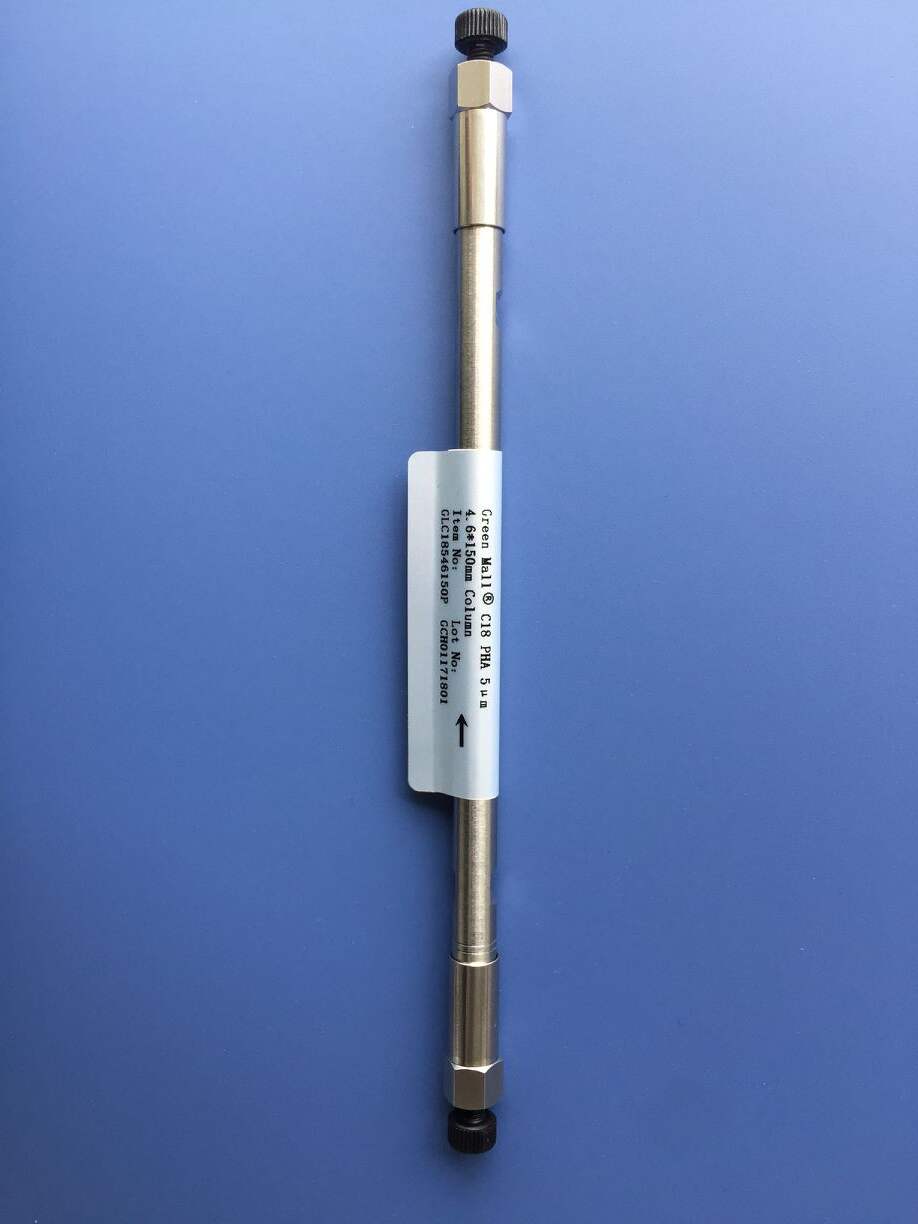στήλη κανονικής φάσης hplc
Ένα στήλη HPLC κανονικής φάσης αποτελεί ένα βασικό συστατικό στη υψηλή επίδοση χρωματογραφία ρευστών, σχεδιασμένο να διαχωρίζει ουσίες με βάση τις πολαρικές ενδιάμεσεις τους με τη σταθερή φάση. Η στήλη αποτελείται από μια πολαρική σταθερή φάση, συνήθως σιλικόνη ή αλουμινίου, που είναι συστατική μέσα σε ένα ανθεκτικό διάβλητρο από οξειδιαμένο χάλυβα. Αυτή η διάταξη επιτρέπει τη διαχώριση μορίων μέσω ενός διαδικασμού όπου τα λιγότερο πολαρικά συνάδεια εκτυλίσσονται πρώτα, ακολουθούμενα από τις πιο πολαρικές ουσίες. Η εσωτερική δομή της στήλης περιλαμβάνει προσεκτικά ελεγχόμενες μεγάλες μερικών, συνήθως μεγάλες από 3 μέχρι 5 μικρομέτρια, εξασφαλίζοντας σταθερές και αναπαράγωγες διαχωριστικές ικανότητες. Τις κύριες λειτουργίες της περιλαμβάνουν την ανάλυση γεωμετρικών ισομερών, τη διαχώριση συνδεδεμένων με την δομή ουσιών και την καθαρισμό διάφορων χημικών ουσιών. Η τεχνολογία εξοχεύει στην επεξεργασία μη πολαρικών έως μεσαίως πολαρικών συνάδεια, κάνοντάς την ειδικά αξιόλογη στη φαρμακευτική ανάλυση, την περιβαλλοντική επιβλέπεια και τη χημική έρευνα. Η σχεδιασμένη δομή της στήλης περιλαμβάνει ακριβή έλεγχο της θερμοκρασίας και μπορεί να αντέχει υψηλές πίεσεις, συνήθως μέχρι και 6000 ψι, εξασφαλίζοντας βέλτιστες διαχωριστικές επιδόσεις. Οι εφαρμογές εκτεινονται σε πολλές βιομηχανίες, συμπεριλαμβανομένης της ανάπτυξης φαρμάκων, της ελέγχου ποιότητας στην παραγωγή και της ακαδημαϊκής έρευνας, όπου η ακριβής απομονωμένης και αναγνώρισης των συνάδεια είναι κρίσιμη. Η πολυτέλεια και αξιοπιστία της στήλης HPLC κανονικής φάσης την κάνει μια απαραίτητη εργαλείο στη σύγχρονη αναλυτική χημεία, ειδικά για την ανάλυση περίπλοκων μειγμάτων και την καθαρισμό διαδικασιών.
